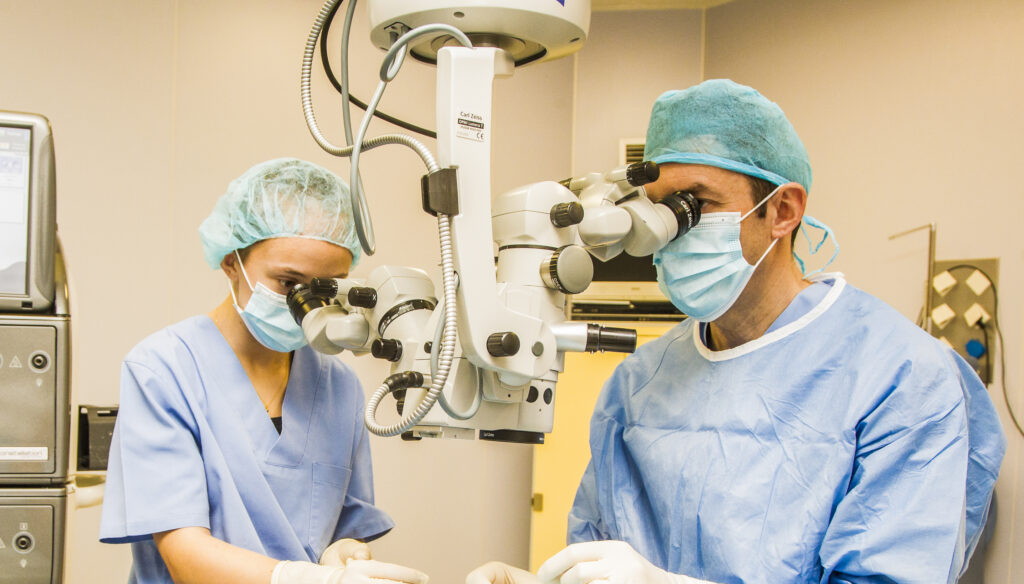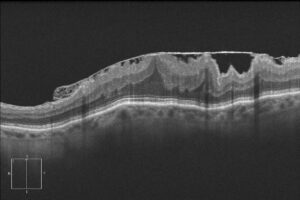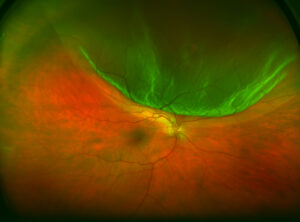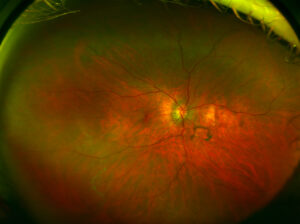Treatments
Vitrectomy

What is vitrectomy?
Vitrectomy is the most widely used eye microsurgery technique for retinal diseases and trauma. At Miranza, we boast pioneering ophthalmologists who have introduced and developed it in Spain, with over 30 years’ experience.
The procedure consists of removing part or all of the vitreous humour (transparent gel that fills the eyeball) to directly manipulate the retina (membrane that covers the back of the eye) and treat the pathologies that affect this tissue.
To carry out the surgery, which we perform under local anaesthesia, the surgeon makes three tiny incisions on the outside of the eye. Through them, he introduces surgical instruments smaller than half a millimetre and, with great delicacy and precision, manipulates the retina with tweezers, scissors, lasers and lights. Supporting the skills of our ophthalmologists, at Miranza’s clinics we boast the most advanced surgical equipment and systems for visualising the structures inside the eye to achieve the best results.
Eye diseases treated by vitrectomy
Recovery
Current techniques and technologies for vitrectomy surgery facilitate rapid recovery of patients. You can go home the same day of the surgery and, although you will notice some eye discomfort (such as a foreign body sensation in the eye or swelling of the eyelids) at first, the treatment prescribed by your ophthalmologist will help to relieve it.
Our specialists will also explain in detail the postoperative guidelines you should follow. You can return to your normal life after a few weeks, while always taking into account the indications given, and your vision will gradually improve. The benefits of surgery are not immediate, but you will fully appreciate them once the first months have passed.
Recovery will vary depending on the type of vitrectomy surgery performed: in some cases, the surgeon will decide to leave an intraocular gas inside the eye that is reabsorbed after several weeks or, in more complex cases, silicone oil that must be removed after a few months in the operating room. On other occasions, if there is no retinal detachment, the use of intraocular serum may be sufficient, hence allowing a much more comfortable recovery.







